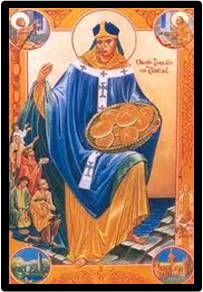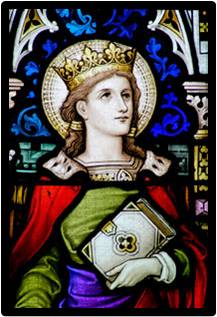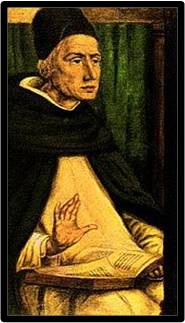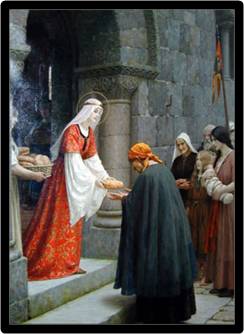NOVEMBER 14 - ST. LAWRENCE O’TOOLE

Lawrence was born at Castledermot in Ireland. He was the son of the chief of Hy Murray. When he was only ten years old, a neighboring king Dermot McMurrogh Leinster attacked his father’s territory and kidnapped him. Young Lawrence suffered for two years.
Then his father forced the king to give him up to the care of a bishop. When he did, Lawrence’s father hurried to see his son and gratefully brought him home.
The chief wanted one of his sons to enter the service of the Church. While he was wondering which one to send, Lawrence told him with a laugh that he need not wonder anymore. “It is my desire,” said Lawrence, “to have for my inheritance the service of God in the Church.”
So his father took him by the hand and gave him into the care of the Bishop of Glendalough. Lawrence became a priest and the abbot of a great monastery.
Once food became very scarce in the whole neighborhood of the monastery. The good abbot gave great quantities away to keep the people from starving. He had many problems to handle as head of the monastery, too. Some of the monks criticized him for being too strict.
But Lawrence kept right on guiding the community in the way of self-sacrifice, despite the criticism. Then, there was the problem of the robbers and outlaws who lived in the nearby hills. Yet nothing discouraged the fearless Lawrence O’Toole.
In fact Lawrence was very strict with himself too. He wore a hair shirt under this robes. He made a 40 day retreat in St. Kevin’s cave every year. He never ate meat or drank wine and fasted every Friday. But when he was in company, he would color his water and make it look like wine to avoid bringing attention to himself.
He became so famous that soon he was chosen to be archbishop of Dublin. In this new position, he lived as holy a life as ever. Every day, he invited many poor people to be his guests and helped many others as well. Lawrence loved his people and Ireland, and his country very much. He did all he could to keep peace.
Once a madman attacked him as he was going up to the altar to say Mass. He was knocked to the floor unconscious. Yet he came to his senses right away. He asked for water, blessed it and washed the wound at once. The bleeding stopped and he went right ahead with the Mass.
After years of labor for the Church, St. Lawrence O’Toole became very ill. When he was asked if he wanted to make a will, the holy archbishop smiled. He answered, “God knows that I don’t have a penny in the world.” He had long ago given everything he had to others, just as he had given himself completely to God.
St. Lawrence O’Toole died on November 14, 1180 when he was traveling with King Henry II, as a peacemaker.



